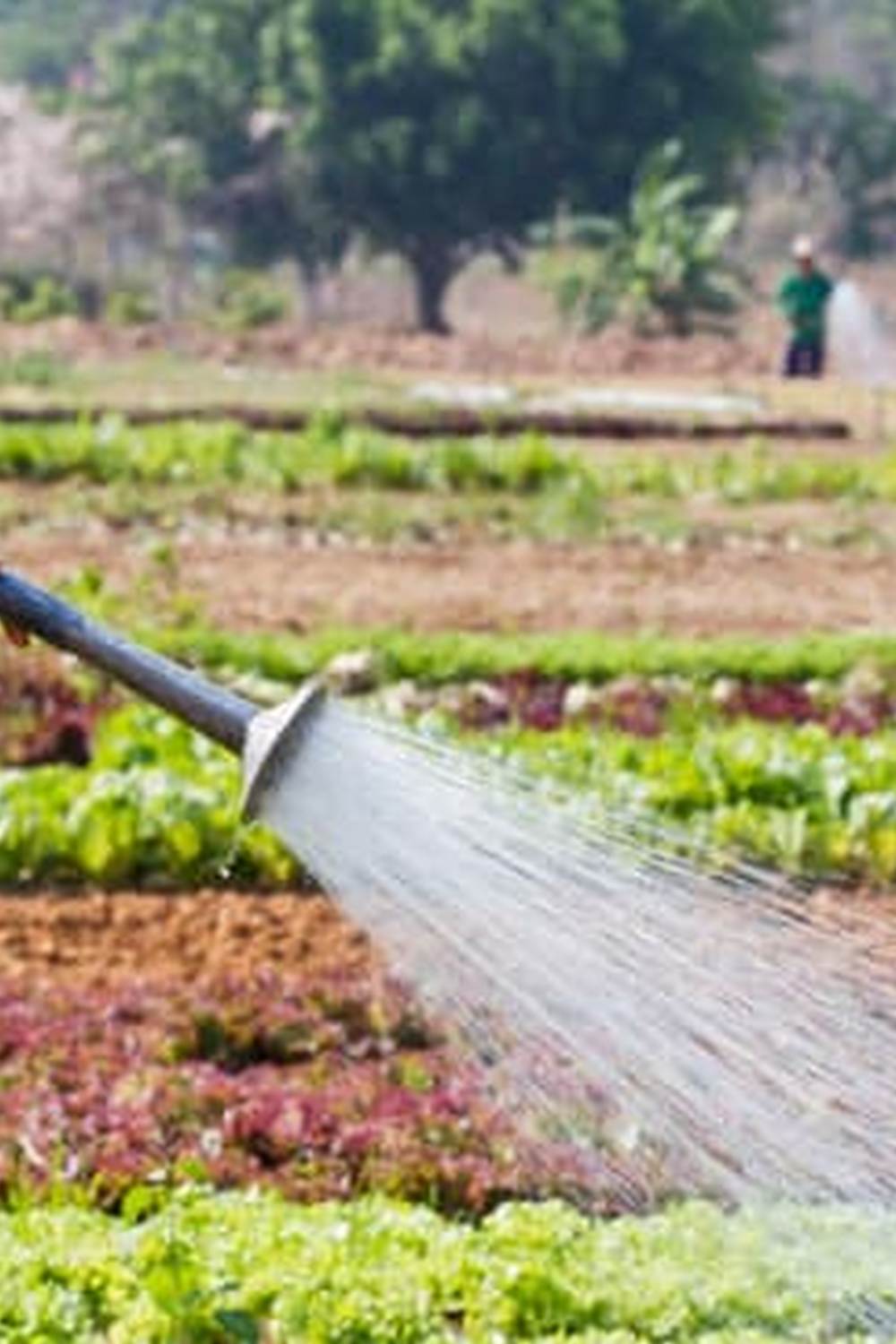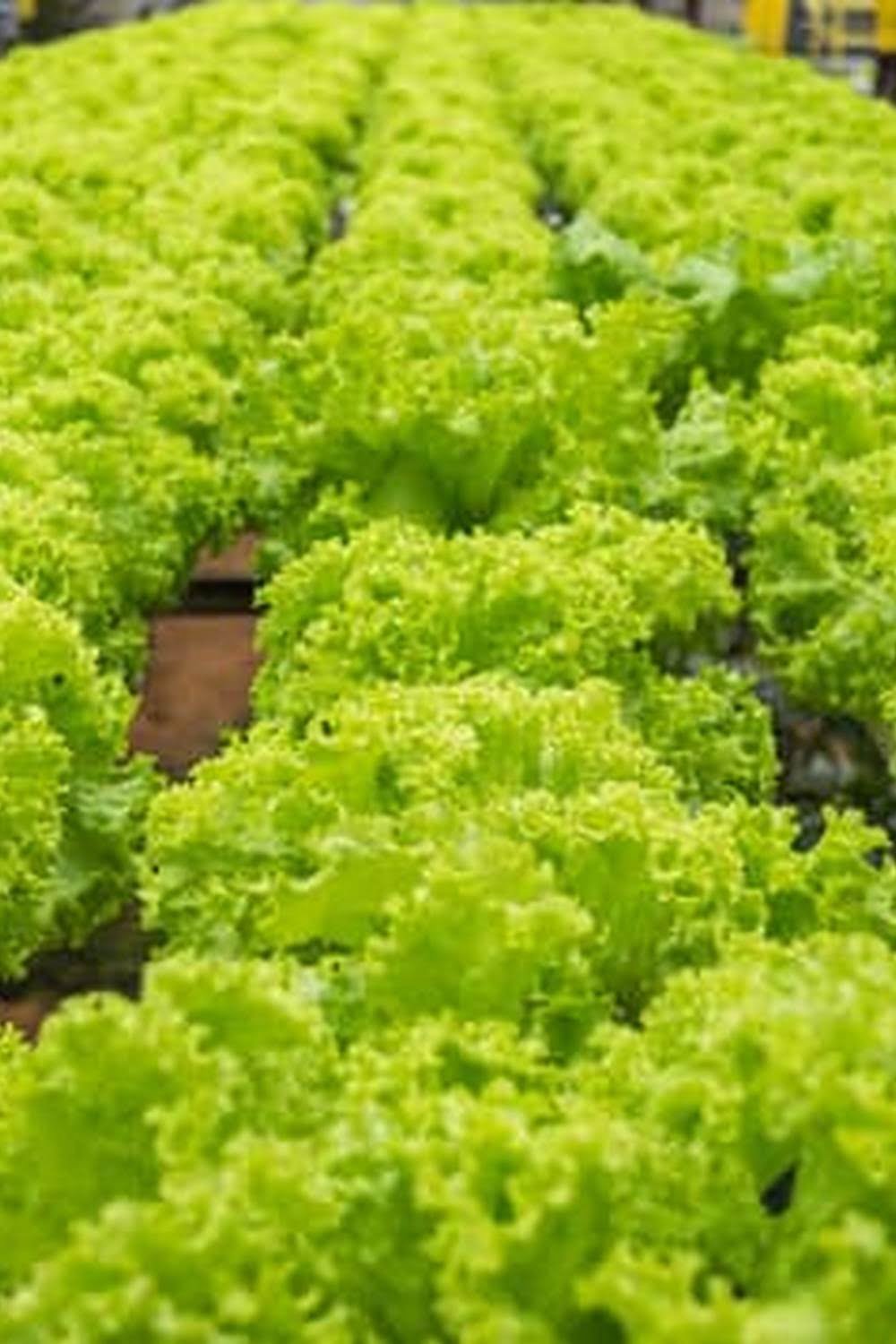Are you looking to start your own raised vegetable garden but not sure where to begin? Look no further. In this article, we will cover everything you need to know about raised vegetable gardens, including the benefits, choosing the right location, building and designing, selecting the best vegetables, maintenance and care tips, and success strategies. We will also explore some creative ideas for raised vegetable gardens from Pinterest for inspiration.
Raised vegetable gardens have gained popularity in recent years as a convenient and efficient way to grow your own produce. Many gardening enthusiasts have turned to platforms like Pinterest for innovative ideas and designs for their own raised gardens. Whether you’re a beginner or experienced gardener, incorporating raised beds into your gardening routine can offer numerous benefits.
In this comprehensive guide, we will provide you with all the information you need to get started on your own raised vegetable garden journey. With tips on everything from selecting the right location to maintaining your garden’s health, we aim to inspire and empower you with the knowledge and resources needed to create a successful and bountiful raised vegetable garden. And what better place to find inspiration than on Pinterest? Let’s dive in.
Benefits of Raised Vegetable Gardens
Raised vegetable gardens have become increasingly popular for home gardeners, and for good reason. There are numerous benefits to choosing a raised vegetable garden over a traditional in-ground garden. Here are some of the key advantages to consider when deciding whether a raised garden is right for you:
- Improved Drainage: One of the primary benefits of a raised vegetable garden is its superior drainage. The elevated soil allows excess water to drain away more effectively, preventing waterlogged roots and potential rot.
- Control Over Soil Quality: With a raised vegetable garden, you have complete control over the soil composition. This means you can tailor the soil specifically to the needs of your chosen vegetables, leading to healthier plants and better yields.
- Reduction in Weeds and Pests: Raised beds can help minimize weed growth and deter certain pests, such as slugs and snails, from reaching your precious crops.
In addition to these practical benefits, raised vegetable gardens also offer ergonomic advantages. By raising the planting surface to waist height or higher, they make gardening more accessible and comfortable for individuals with physical limitations. This makes it an ideal option for those who may struggle with bending or kneeling for extended periods.
Ultimately, these benefits contribute to increased success in growing vegetables at home. Whether you have limited space or simply want more control over your gardening environment, a raised vegetable garden can be a highly rewarding choice. It’s no wonder that ideas for beautiful and functional raised gardens can be found all over Pinterest, inspiring even more people to take up this approach to gardening.
Choosing the Right Location for Your Raised Vegetable Garden
When it comes to choosing the right location for your raised vegetable garden, there are a few key factors to consider in order to ensure the success of your garden. Whether you are a beginner or an experienced gardener, selecting the perfect spot for your raised bed is crucial for the health and yield of your vegetables.
Sunlight
One of the most important factors to consider when choosing the location for your raised vegetable garden is sunlight. Most vegetables require at least 6-8 hours of direct sunlight per day. Therefore, it is essential to select a spot that receives ample sunshine throughout the day. Take note of any trees or structures that may shade the area at different times, and plan accordingly.
Accessibility
Another important consideration is accessibility. Make sure that your raised vegetable garden is easily accessible for planting, watering, weeding, and harvesting. You don’t want to have to trudge through muddy paths or overgrown areas just to tend to your crops. Additionally, consider proximity to a water source for easy watering.
Soil Quality
Lastly, soil quality plays a crucial role in the success of your raised vegetable garden. Choose a location with well-draining soil that is not prone to flooding or waterlogging. Avoid areas with compacted or rocky soil, as this can hinder root growth and nutrient uptake by your plants.
By carefully considering these factors when choosing the location for your raised vegetable garden, you can set yourself up for gardening success and enjoy a bountiful harvest of fresh, homegrown produce. And if you’re looking for inspiration on how to design and layout your raised bed, you can find plenty of creative ideas on Pinterest – from simple DIY designs to elaborate multi-level structures.
Building and Designing Your Raised Vegetable Garden
When it comes to building and designing your raised vegetable garden, there are a few key considerations to keep in mind. First, you’ll want to decide on the materials you’ll use for your garden bed. While wood is a popular choice for its natural look and ease of construction, you may also consider options like stone or composite materials for a more durable and long-lasting structure.
In terms of design, the size and shape of your raised vegetable garden will depend on the available space in your yard or garden. Consider the layout of your garden beds to ensure that they receive adequate sunlight and are easily accessible for planting, maintenance, and harvesting.
Choosing the Right Soil
One of the most important aspects of building a successful raised vegetable garden is ensuring that you have high-quality soil. You’ll want to fill your garden beds with a nutrient-rich soil mix that provides good drainage and aeration for healthy root growth. Consider mixing in compost or other organic matter to enrich the soil and provide essential nutrients for your vegetables.
Adding Irrigation Systems
To make maintenance easier, you may also want to consider adding an irrigation system to your raised vegetable garden. Drip irrigation or soaker hoses can help ensure that your plants receive consistent watering without wasting water through runoff or evaporation. This also helps to maintain optimal moisture levels in the soil, promoting healthy plant growth.
By carefully considering the materials, design, soil, and irrigation systems for your raised vegetable garden, you can create a functional and attractive space for growing your favorite vegetables while making efficient use of space in your yard or garden. For inspiration and ideas on different designs and styles for raised vegetable gardens, be sure to check out Pinterest where many enthusiasts showcase their own creations using various design elements and techniques.
Selecting the Best Vegetables for Your Raised Garden
When it comes to choosing the best vegetables for your raised garden, there are several factors to consider. First, you’ll want to think about what vegetables grow best in your specific climate and soil conditions. You can research this information online or consult with a local gardening center for guidance. Additionally, consider the size of your raised garden and how much space each vegetable will need to thrive.
Some popular options for raised vegetable gardens include tomatoes, peppers, cucumbers, lettuce, spinach, carrots, and radishes. These vegetables are known for their adaptability to different growing conditions and their ability to flourish in raised beds. Furthermore, they can be easily accessed for watering, weeding, and harvesting due to the elevated nature of the garden.
It’s also important to consider the vertical space within your raised garden. Some vegetables, like tomatoes and cucumbers, benefit from staking or trellising for support as they grow. This maximizes the use of space while ensuring that these vining plants have room to spread out without overwhelming the rest of your garden.
In addition to these considerations, take into account your personal preferences when selecting vegetables for your raised garden. If you have a family favorite that you enjoy cooking with on a regular basis or if there’s a unique vegetable that you’ve always wanted to try growing yourself, don’t hesitate to incorporate these into your garden plan.
Ultimately, the best vegetables for your raised garden are the ones that will bring you joy and satisfaction as you watch them thrive.
| Vegetable | Best Growing Conditions |
|---|---|
| Tomatoes | Sunny location with well-drained soil |
| Cucumbers | Warm temperatures and regular watering |
| Lettuce | Cooler temperatures and partial shade |
| Carrots | Loose soil and consistent moisture |
Maintaining and Caring for Your Raised Vegetable Garden
Once you have successfully built and planted your raised vegetable garden, it is essential to maintain and care for it to ensure a healthy and bountiful harvest. Here are some key tips to keep in mind for maintaining your raised vegetable garden:
1. Watering: Proper watering is crucial for the success of your raised vegetable garden. Make sure to water regularly, especially during hot and dry periods. Consider installing a drip irrigation system or soaker hoses to ensure even watering.
2. Weeding: Regularly inspect your raised garden for any weeds and remove them promptly. Weeds can compete with your vegetables for nutrients and water, so it’s important to keep them in check.
3. Fertilizing: Depending on the type of soil you have chosen for your raised vegetable garden, you may need to add organic fertilizers periodically. Consider using compost or natural manure to enrich the soil and provide essential nutrients for your plants.
In addition to these key maintenance tasks, it’s important to monitor the overall health of your plants, watch out for pests, and provide support as needed for climbing vegetables like tomatoes or peas. By staying on top of maintenance tasks, you can ensure a thriving raised vegetable garden that provides an abundant harvest.
And speaking of inspiration for maintaining and caring for your raised vegetable garden, there are countless ideas on Pinterest that can help guide you through the process. From DIY irrigation systems to natural pest control methods, Pinterest is a treasure trove of innovative ideas for keeping your raised vegetable garden healthy and productive.
Whether you’re a seasoned gardener or just starting out, exploring raised vegetable gardens on Pinterest can provide valuable insights and inspiration for maintaining and caring for your own beautiful garden space.
Tips for Success With Raised Vegetable Gardens
When it comes to achieving success with your raised vegetable garden, there are a few key tips to keep in mind. First, it’s essential to start with good quality soil. Since raised gardens are often filled with new soil, it’s important to use a mix that is nutrient-rich and well-draining. If you’re unsure of the best soil for your raised garden, consult with a local gardening expert or nursery.
Another tip for success is proper watering. Raised gardens tend to dry out faster than traditional gardens, so be sure to water consistently, especially during hot weather. Consider installing a drip irrigation system to ensure that your plants receive the right amount of water without overdoing it.
Additionally, when planning and planting your raised vegetable garden, consider the concept of companion planting. Certain plants benefit from being planted together while others should be kept apart. For example, planting basil near tomatoes can help repel pests and improve flavor, while planting beans near onions can stunt each other’s growth.
If you’re looking for more inspiration and ideas for your raised vegetable garden, look no further than Pinterest. This social media platform is brimming with creative and innovative ways to design and plant a successful raised vegetable garden. From DIY design ideas to tips on how to maximize space in a small garden, Pinterest has everything you need to elevate your gardening game.
| Tip | Detail |
|---|---|
| Good quality soil | Use nutrient-rich and well-draining soil |
| Proper watering | Consider installing a drip irrigation system |
| Companion planting | Plant compatible vegetables together for better results |
Showcasing Raised Vegetable Garden Ideas From Pinterest
Pinterest is a treasure trove of inspiration for raised vegetable gardens. Whether you are looking for unique design ideas, creative planting arrangements, or innovative gardening techniques, Pinterest has it all. From DIY projects to professional landscaping, Pinterest offers a vast array of raised vegetable garden ideas to suit any taste and style.
One popular trend on Pinterest for raised vegetable gardens is the use of vertical gardening techniques. Utilizing trellises, wall-mounted planters, and hanging baskets, gardeners can maximize their growing space and create a stunning visual display in their outdoor spaces. Vertical gardening not only adds aesthetic appeal but also allows for better air circulation and easier access to plants for maintenance and harvesting.
Another prevalent theme on Pinterest for raised vegetable gardens is the integration of companion planting. Gardeners are exploring the benefits of planting compatible crops together to improve flavor, deter pests, and promote overall garden health. The practice of companion planting is not only functional but also adds an extra layer of artistry to the layout of a raised garden bed.
In addition to design and planting techniques, Pinterest provides countless ideas for creative and practical features to incorporate into a raised vegetable garden. From built-in seating areas to integrated irrigation systems, there are endless possibilities for enhancing the functionality and enjoyment of a raised garden space. By leveraging the wealth of ideas available on Pinterest, gardeners can find inspiration to create their own unique and thriving raised vegetable gardens.
Conclusion and Inspiration for Your Raised Vegetable Garden Journey
In conclusion, raised vegetable gardens offer numerous benefits and advantages for gardeners of all experience levels. From increased accessibility and better soil drainage to the ability to customize the design and select the best vegetables for your specific needs, there are plenty of reasons to consider starting your own raised garden. With the right location, design, and maintenance, you can create a thriving vegetable garden that will provide fresh produce for your family throughout the growing season.
As you embark on your raised vegetable garden journey, take inspiration from the countless ideas and designs available on Pinterest. From simple and practical raised beds to elaborate and artistic designs, Pinterest offers a wealth of creative possibilities for your own garden. Whether you’re looking for practical tips on construction or simply seeking motivation to get started, Pinterest can be a valuable resource in your gardening endeavors.
Remember that success with raised vegetable gardens takes time, effort, and patience. By carefully selecting the best location, designing a functional layout, choosing the right vegetables, and providing ongoing care and maintenance, you can enjoy a bountiful harvest from your raised garden. So dive into the world of raised vegetable gardens on Pinterest, gather inspiration from fellow gardeners, and take the plunge into creating your own beautiful and productive raised garden space.
Frequently Asked Questions
What Is the Best Layout for a Raised Bed Vegetable Garden?
The best layout for a raised bed vegetable garden is one that maximizes space and accessibility. It’s important to ensure that the beds are not too wide, making it difficult to reach the center. Consider creating pathways between the beds for easy navigation and maintenance.
What Vegetables Should Not Be Grown in a Raised Bed?
There are certain vegetables that should not be grown in a raised bed, such as deep-rooted plants like potatoes and carrots. These vegetables require more depth than what a standard raised bed can provide. Additionally, vining plants like watermelon and pumpkin may overwhelm the space.
What Should I Put at the Bottom of a Raised Garden Bed?
At the bottom of a raised garden bed, it’s best to put down a layer of landscape fabric to prevent weeds from growing up into the bed. You can also consider adding a layer of cardboard or newspaper before adding soil to further suppress weed growth. This will help maintain the quality of the soil over time.

If you’re looking to get into vegetable gardening, or are just looking for some tips on how to make your current garden better, then you’ve come to the right place! My name is Ethel and I have been gardening for years. In this blog, I’m going to share with you some of my best tips on how to create a successful vegetable garden.





